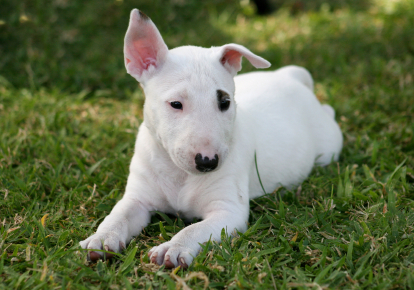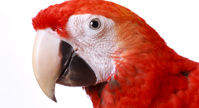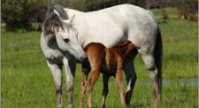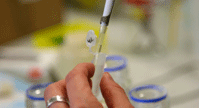Primary Lens Luxation (PLL)
Description:

Primary Lens Luxation (PLL) is a disorder that is characterised by weakened zonular fibers which eventually lead to the dislocation of the lens in the eye. In the eye of a canine, the lens is located directly behind the iris and pupil. It is responsible for focusing light to the retina in the back of the eye. The zonular fibers are responsible for holding the lens in place. In dogs affected by PLL, these fibers are much weaker and can allow the lens to dislocate or luxate. This is very painful for the dog and depending on where the lens moves to, can leave the dog permanently blind. Often, this event will occur around 3-6 years of age. It is recommended that all dogs genetically affected by PLL be evaluated by a veterinarian every 6 months to monitor the condition of the eyes.
Primary Lens Luxation is generally a autosomal recessive disorder. However, there have been cases of a carrier dog having a luxated lens. Carriers are dogs that have one copy of the mutation responsible for PLL, and can pass that mutation on to any offspring. Typically carriers have a lesser chance of the lens luxating. When two carriers are bred there is a 25% chance that the offspring will inherit a mutated gene from both parents and be affected by the disorder.
Not all cases of a luxated lens are from Primary Lens Luxation. Dogs that are genetically clear of the mutation could potentially experience this event at some point. This could be from an injury, other eye disorders, or infection.
Acceptable Sample Types:
Animal Genetics accepts buccal swab, blood, and dewclaw samples for testing. Complimentary sample collection kits are available and can be ordered at test now.
This Test Is Relevant For the Following Breeds:
|
|
|
|
|
|
|
|
|
|
|
|
|
|
|
|
|
|
|
|
|
|
|
|
|
|
Results
Animal Genetics offers DNA testing for Primary Lens Luxation (PLL). The genetic test verifies the presence of the recessive PLL gene and presents results as one of the following:
| PLL/PLL | Affected | The dog carries two copies of the mutant gene and is homozygous for the Primary Lens Luxation mutation. The dog is highly likely to display symptoms associated with the disorder and will always pass on a copy of the mutation to any offspring. |
| PLL/n | Carrier | Both the normal and mutant copies of the gene detected. The dog is a carrier for Primary Lens Luxation and could pass on either allele to any offspring. |
| n/n | Clear | Dog tested negative for the mutation that causes Primary Lens Luxation and will not pass on the defective gene to its offspring. |
Submit a Sample for Testing:
To submit a sample for testing please go to test now.
To order a sample collection kit please go to order sample collection kits.
Cost per sample is $45.00. Please see our Canine Fee Schedule for all test rates.










